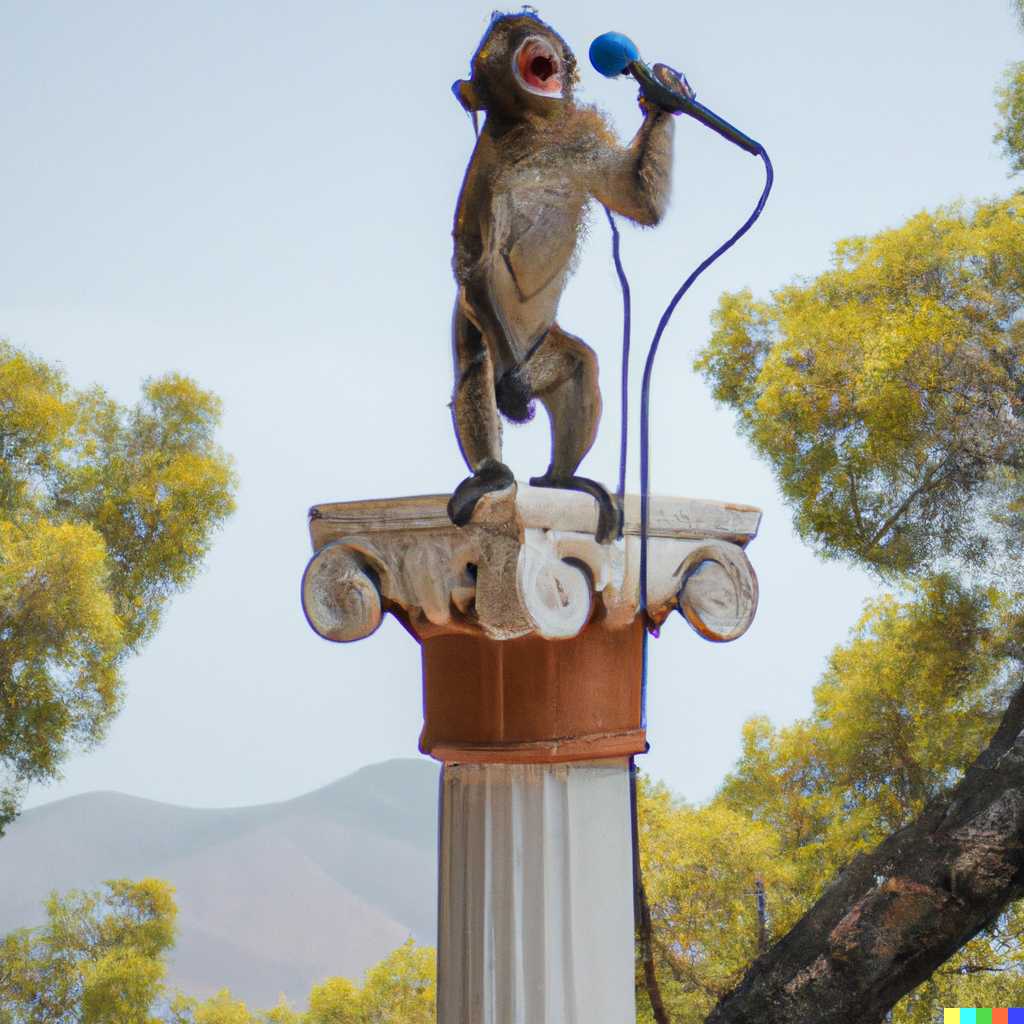The concept of the monkey and the pedestal comes from Google’s in-house innovation hub. The concept goes like this. If you are trying to train a monkey to sing while standing on a pedestal, you have to both train the monkey to sing and build the pedestal. The two tasks are competing for your money, time, and attention. The problem is what you should do first. Build the pedestal or train the monkey to sing? The message was designed to create a mental model to clarify how you should approach solving a problem.
The problem with many small businesses is that they need to show investors and employees progress toward their goals. That goal may be creating a new business, division, product, or service. You will encounter easy tasks and hard problems along the path to achieving a goal. When trying to solve a hard problem, the typical response is to break them down and tackle the known and easy parts first. Tackling the known and easy parts does not accurately reflect true progress toward the ultimate goal. In fact, it creates false progress and often wastes resources.
The crazy example of teaching a monkey to sing while standing on a pedestal clearly implies that teaching the monkey to sing will be an almost impossible task when compared to creating a pedestal for the monkey to stand on. Yet, in the real world, many organizations build the pedestal first to show evidence of making progress rather than working on trying to teach the monkey to sing first. Let’s face it: if they fail to teach the monkey to sing, there is no need for a pedestal.
The thing you are trying to prove is something that you don’t know. And what you don’t know is if you can train a monkey to sing. If you start by building the pedestal, it would not get you any closer to creating the solution, and worse, it will represent false progress.
When starting a new business, many people begin by registering their entity with the Secretary of State. Registering an entity is easy, takes only a few minutes, and gives the founders a sense of progress. However, it’s a false sense of progress since it does not answer unknown issues, such as if anyone will buy what you intend to sell. All efforts that do not address the unknown are like building a pedestal. Every pedestal you build creates a greater sense of progress, strengthening the sunk cost bias. The greater the sunk cost, the harder it is to change course if necessary.
The way I see the monkey and the pedestal story playing out in business is when, during a project kickoff meeting, everyone agrees to go after the low-hanging fruit first. Low-hanging fruit is, by definition, pedestal building, offering the illusion of progress rather than any real ground gained toward reaching an ultimate goal. What makes them low hanging is the fact they are easy, and you already know how to do it. Building pedestals means spending time, money, and other resources on things that don’t bring you closer to the question of whether you can achieve what you are striving for.
Addressing the low-hanging fruit creates two problems. First, it means that it will take you longer to figure out whether you can solve for the unknowns. The longer it takes you to figure that out, the longer you pursue a project that may not be worthwhile. Second, it creates a sense of ownership by the team, cementing a commitment that becomes harder to abandon and easier to justify continuing, even if all the signs indicate you are heading toward a dead end.
The fear of wasting resources if you abandon your course makes it hard to walk away. That is why building pedestals before you tackle the monkey is so dangerous. Every dollar or minute that you spend addressing the low-hanging fruit creates friction to quitting when you discover that you can’t actually resolve the bottlenecks.
Grit means keeping your focus on the monkey until you can teach it to sing. What grit does not mean is building pedestals and producing false progress to keep you motivated until the only thing you have left is the monkey. By then, you have wasted a lot of time and exhausted most, if not all, of your resources, making it impossible to pivot. This is why applying the affordable loss principle is so important in these situations.
You must first solve for the monkey problem before you start building pedestals. This is why I’m so emphatic with my clients to validate their business idea using MVPs and a minimal marketable product before they seek funding or develop a solution.
Creating a website or drafting contracts before you have developed a business model that will make a prospect willing to pay you for it is folly. However, I see this every week with the clients I mentor. Somehow, they feel the need to build pedestals to demonstrate they are making progress and save the training of the monkey until the end.
I advise clients to list the tasks necessary to achieve their business goals. Next, prioritize all the tasks to meet this goal, from the most difficult to the easiest. Then, start by tackling the most difficult tasks. A great rule of thumb is if:
- It can’t be done immediately; it’s difficult
- It is not clear how it can be done; it’s difficult
- It requires significant resources; it’s difficult
- It is novel; it’s difficult
In this way, if you can’t solve a task, you have at least preserved some resources to allow you to pivot and try something a little different.
Simply put, there is no point in building pedestals if you can’t solve for the monkey problem. The monkey and the pedestal analogy reminds us to tackle the hardest things first because if we can’t solve them, there is really no point in doing the rest of the work.
How can you apply the monkey and the pedestal concept to your business or project?









